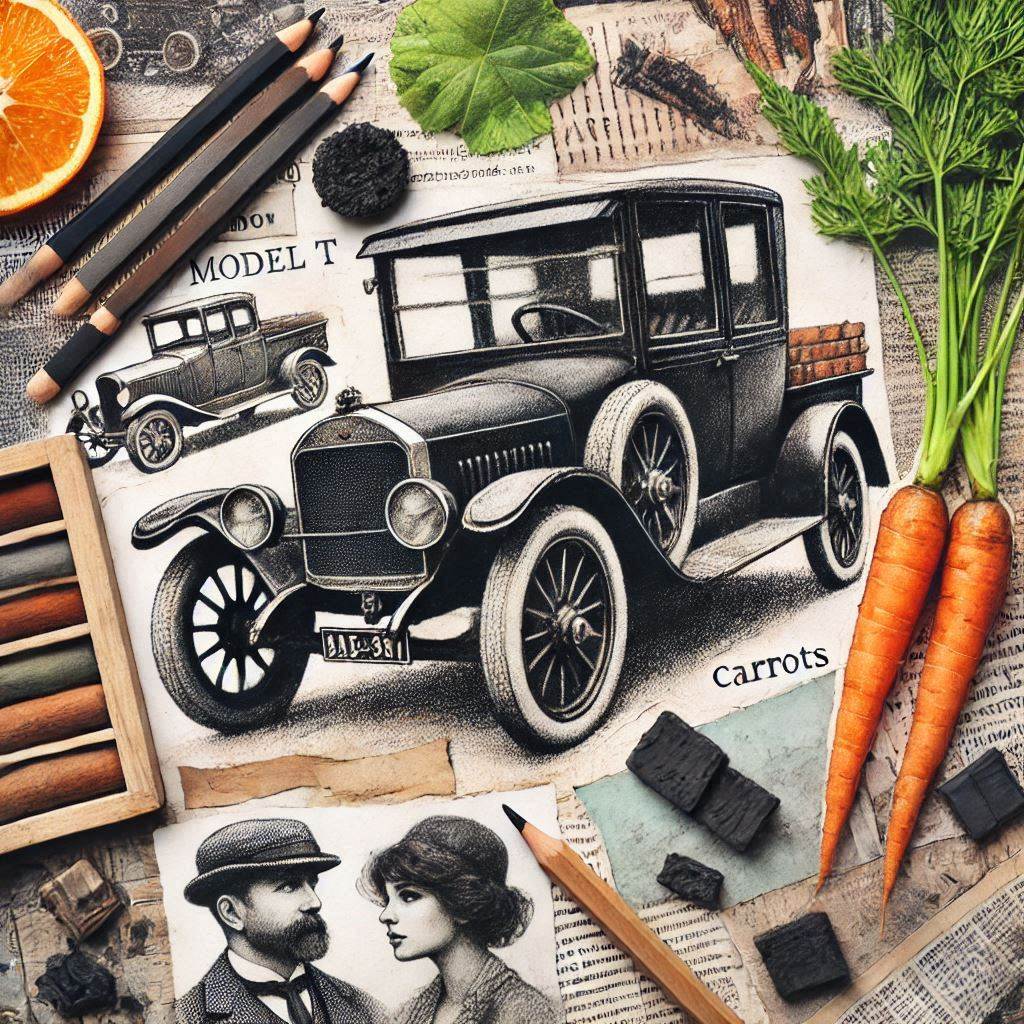Discover creative innovations that turned waste and problems into groundbreaking solutions.

Hey friends! I write a lot about creativity as a form of self expression, but today I want to talk about creativity as a method of problem solving. Let’s get into it.
Baby Carrots
Fun fact: I’m as old as Baby Carrots.
Before 1985, the agricultural industry discarded 30-40% of carrots for cosmetic reasons. This drove Mike Yurosek, a California farmer, absolutely mad. So in the same year I was born, he asked himself a question: how could we make misshapen, unsellable produce more appealing to consumers?
He devised a way to cut peal, and shape ugly carrots into the bite-sized snack we all know today.
How successful was this creative innovation? Today, 70% of all carrots sold are of the baby variety.
Takeaway: Sometimes your biggest waste is actually your biggest asset.
Run off with the Circus
In 1984, a pair of street performers, Guy Laliberté and Gilles Ste-Croix, posed the question, what would circus performance look like if it was elevated to a high art form? They concluded that it would likely be absent ring masters and animal acts, and include acrobatics, dance, and stunning feats of physicality all centered around a cohesive theme and enthralling storytelling.
That same year, the provincial government of Quebec, in celebration of the 450th anniversary of Jacques Cartier’s arrival in North America, offered grants to fund cultural projects. Laliberté and Ste-Croix received one such grant and Cirque du Soleil was born. They spent the rest of that year touring small towns across Quebec. By 1987, they were touring internationally, and in 2015 they were valued at $1.5 billion.
While COVID disrupted their forward progress, and set them back financially, the cultural impact that two street performers made over time has been remarkable.
Takeaway: Cirque du Soleil demonstrates the transformative power of reimagining craft as art. With vision and creativity, even the most traditional forms can achieve boundless impact.
Flat Pack Furniture
In 1956, a Swedish furniture designer named Gillis Lundgren, struggled to fit a leaf shaped table into a Volvo station wagon to deliver to a catalog photoshoot. He addressed the issue by removing the legs of the table, packing the entire piece of furniture flat, allowing it to fit in the car.
This simple solution spurred the transformation of Ikea from a traditional furniture company to one that develops, manufactures, and sells easy to transport unassembled furniture. While Gillis isn’t credited as inventing the “flat pack” movement (that title belongs to fellow Swede, Fiolke Ohlsson), he was instrumental in popularizing the concept for Ikea.
Takeaway: Innovation often arises not from a desire to innovate, but from solving real problems encountered in the course of doing the work. Lundgren didn’t set out to change the furniture industry; his ingenuity emerged because he was immersed in it.
Kingsford Charcoal
In the 1920s, Henry Ford’s model T produced an immense amount of costly to dispose of waste wood as a byproduct of its construction. Always seeking to improve efficiencies, Ford enlisted the help of Thomas Edison and Edward G. Kingsford to repurpose that waste wood into charcoal briquettes.
Edison helped develop the design and technology for the kilns used to convert the wood scraps into charcoal. His knowledge of chemistry and industrial equipment was instrumental in creating the high-quality briquettes that became the hallmark of the Ford Charcoal company.
In 1951, the company was sold and renamed Kingsford.
It took Fords vision for efficiency, Edison’s ingenuity, and Kingsford’s resourcefulness to prop up this venture into the success that it became.
Takeaway: When diverse skills and perspectives unite around a challenge, creative innovation often follows.
Velcro
The history of Velcro dates back to 1941 when George de Mestral and his dog, Milka, went on a hike in the Swiss Alps. Upon returning home, he discovered they were both covered in burdock thistle burrs.
Intrigued by this pesky quirk of nature, he examined the burrs under a microscope to discover they were covered in tiny hooks that clung to fabric and fur. Recognizing the potential for a new form of fastener, Mestral spent the next decade experimenting with different materials to reproduce the natural phenomenon.
By 1951, he’d successfully developed a manufacturing process to reproduce the effect at scale using Nylon. He named the product Velcro—a combination of the French words velours (velvet) and crochet (hook).
Velcro gained widespread adoption in the 1960s when NASA adopted it as method for securing items in zero gravity.
Takeaway: What others saw as a nuisance, Mestral saw as inspiration. His curiosity and creativity transformed a pesky natural phenomenon into a widely used, versatile fastener.
One More Thing
Good things are better when shared. If you liked this, it would mean the world to me if you sent it to someone who might like it too.
I’ll see you in your inbox on Tuesday again for two quick hits of inspiration.
Until then,
-Mike